Research
Monthly Archive: December rese
Not just for show: how and why museum specimens are collected
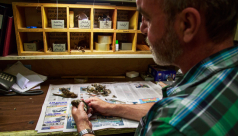
Guest blog by Environmental Visual Communication student Samantha Stephens
The sign on the door seemed quite appropriate. “Abandon all hope ye who enter here.” I imagine that, as this quote from Dante’s Inferno indicates, this might be what hell feels like. As this last barrier swings open and the dim room is revealed, the swarm of hundreds of tiny creatures moving across the concrete floor completes that vision. However, for some of the ROM’s tireless workers, this environment is heaven. Here resides the dermestid beetle colony. These ravenous beetles are eagerly seeking their next meal. Manoeuvring themselves into the crevices of skeletons, they strip the flesh from delicate specimens with more precision and speed than the nimblest of human fingers.
The LMS Lab
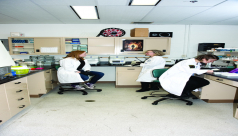
From discovering new species to preserving endangered ones, the ROM’s LMS uses genetic sequencing to study specimens.
Go with the Flow: Technology & Early Glass
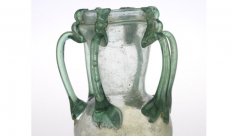
Glass is probably the most fluid of solids. Looking at blown glass, such as that in the ROM's Chihuly exhibition, is like watching movement made still. If you look carefully at the handles of the perfectly preserved handles of this Roman glass vase from Syria (above), it looks as though it is still a fluid, still dynamically moving along its flow. In a way, that is because it is. Glass essentially has the atomic structure of a fluid, but it has been so rapidly cooled that it is essentially stuck in that condition.
Behind the Blitz: Three Young Scientists
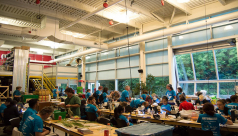
Blog by Nadine Leone, ROM Hands-on Biodiversity Gallery Assistant Coordinator
The first of four blogs in our Ontario BioBlitz: Behind the Blitz series is an interview with three young ROM scientists, who share their favourite highlights from last year's event in the Don Watershed.
A little piece of the puzzle – Citizen Science works!
ROM Ornithologist, Mark Peck describes one of the ways he contributes to Citizen Science
Wildlife Photography: Behind the Camera
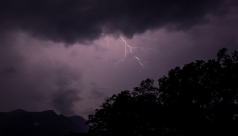
Guest Blog written by Environmental Visual Communication students Aisha Parkhill-Goyette and Jeff Dickie
Imagine you are deep in the jungle of Sri Lanka. You find yourself blinded by the pouring rain, knee deep in a rushing river, desperately trying not to fall in. Lightning strikes only meters away, but instead you are worried about the small tickle by your left elbow, and you are hoping that it is not one of the dozens of land leeches that keep falling onto you from the trees above. Not everyone has what it takes to be a wildlife photographer. It takes a special kind of dedication and a special kind of person - someone who is just as wild as the creatures they are trying to capture on camera.
EVC Students Jeff and Aisha interviewed a pair of up-and-coming wildlife photographers who travelled with ROM mammalogist Burton Lim to Sri Lanka last fall, to share some stories about what it's like behind the camera.
How Drone Photography is Saving Wildlife
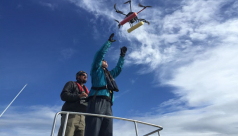
Guest Blog written by Environmental Visual Communication student Lisa Milosavljevic
A number of photos in the Wildlife Photographer of the Year Exhibit make use of aerial photography techniques, including the use of drone photography. There is also a growing demand for its use in professional and academic fields as people are recognizing how drones can be a valuable tool in their work; one of these areas is wildlife conservation. Here we are going to look at the different ways in how drone photography is saving wildlife around the world, as well as some of the controversies and questions that this developing technology raises.
Collection Care for Hellenistic Clay sealings from Edfu, Egypt

Over a century after they were acquired Ptolemaic artifacts at the Royal Ontario Museum, Greek & Roman collection, get new homes
Blue Whale Update: From Trenton with Love
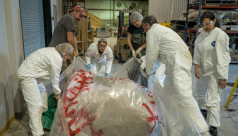
It’s that time of year where many of us are pretty focused on the holidays. Spending time with family and friends, baking and eating loads of treats, and - let’s be honest - the gifts. Finding them, buying them, wrapping them, and getting them to where they need to go, whether the destination is under the Christmas tree, or to be mailed to relatives somewhere else around the world.
So, given that everybody’s in this present-logistics state of mind, we have a gift-wrapping question for you… how do you ship a blue whale heart?
The ROM's Very Own Batman Returns
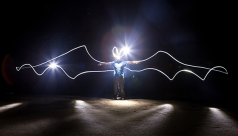
ROM Biodiversity (@ROMBiodiversity) was in the fields and forests of Sri Lanka for an intense four weeks between Aug 23 - Sept 19, 2015, completing the first comprehensive survey of bats and other small mammals that live on the island in close to 80 years.
